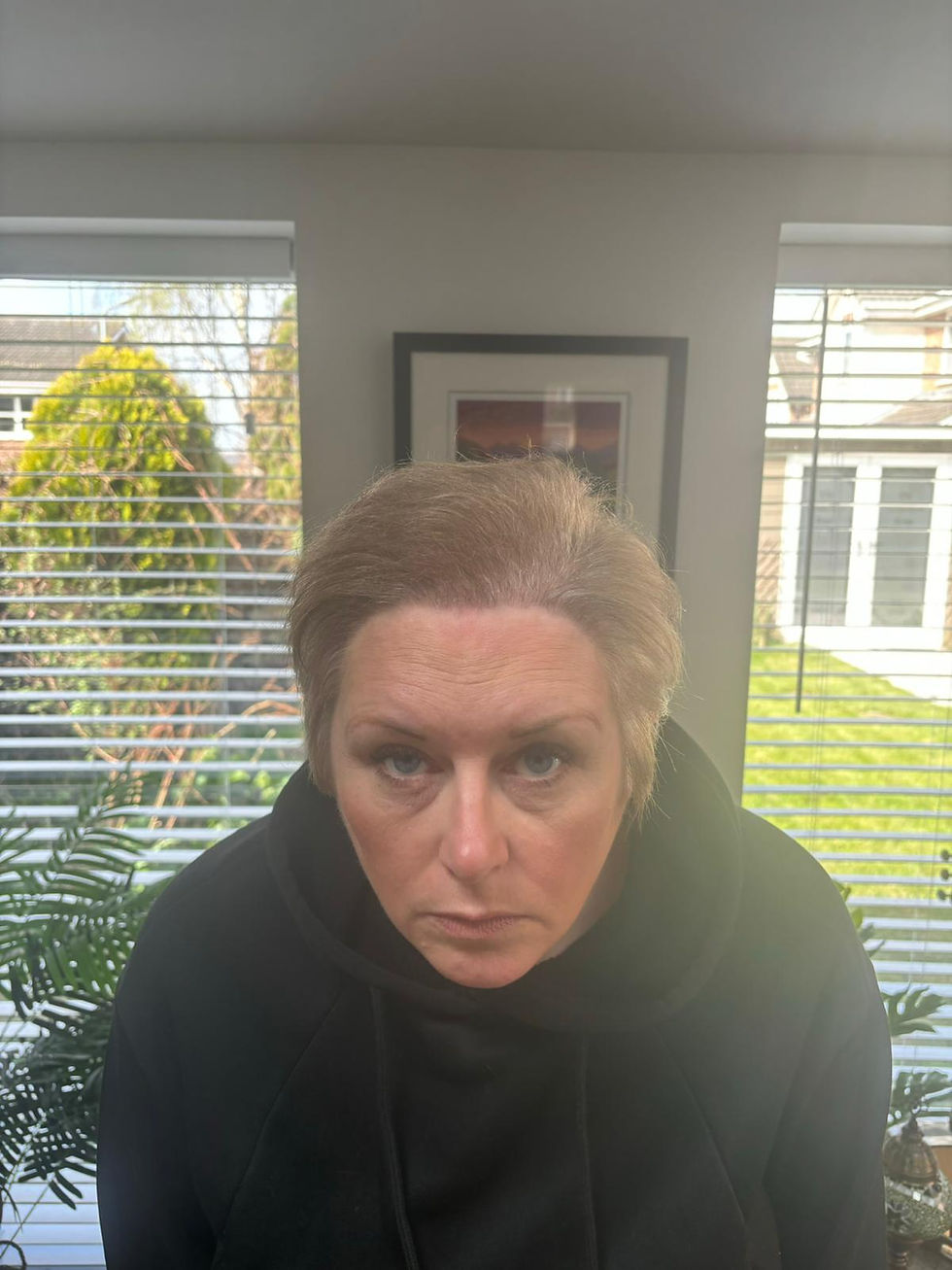When Can You Wear a Hat After a Hair Transplant?
- Vita Hair Clinic

- Aug 11
- 7 min read

After a hair transplant, you might wonder, Can you wear a hat? This article will guide you on when and how to safely wear a hat after the procedure. It's important to find a balance between healing and comfort to get the most out of your hair transplant experience.
To get personalized advice on post-operative care, including wearing hats and other recovery tips, it's crucial to consult with hair restoration professionals like Dr. Kinyas Dusunmez. Their expertise can greatly impact your results.
Additionally, checking out before and after photos can help set realistic expectations for what you can achieve with this procedure.
In this article, we'll dive into the details of wearing hats after a hair transplant so you can approach this important part of your recovery with confidence.
The Risks of Wearing a Hat Too Soon After a Hair Transplant
The first 72 hours following your hair transplant are the most delicate. During this critical period, your newly implanted grafts have not yet fully anchored themselves into the scalp.
This vulnerability means that anything putting pressure or causing friction on the recipient area can lead to graft dislodgement risk, potentially undoing the careful work done during surgery.
Tight or rough headwear poses several challenges:
Mechanical irritation: Hats that fit snugly or have coarse fabrics can rub against sensitive, healing skin. This irritation may cause redness, swelling, and discomfort, interfering with the natural healing process.
Displacement of grafts: Pressure or tugging from tight hats can loosen grafts before they have rooted securely. Even slight movements caused by headwear adjustment can damage fragile follicles.
Infection risk from hats after hair transplant: Contaminated hats or those worn repeatedly without washing may harbor bacteria and fungi. Combined with friction, this creates an environment prone to infections that delay healing and impact hair growth.
Irritation and infection in the transplanted area can significantly affect how well your grafts survive and flourish. Damaged grafts might fail to grow new hair, leading to patchy or uneven results that require further treatment.
Protecting your investment in a hair transplant means recognizing how early hat use might hinder progress. Giving your scalp time to heal without unnecessary pressure or contamination is crucial for encouraging robust graft survival and successful long-term outcomes.
When Is It Safe to Start Wearing a Hat After a Hair Transplant?
Understanding the healing timeline for hat use is crucial to protect your new grafts and support successful hair growth. The question, Can you wear a hat after a hair transplant? depends largely on which post-op day you're on.
1. Post-op days 1-3 hat restrictions
These are the most delicate days following your procedure. No headwear should touch your scalp during this critical healing phase. Your transplanted follicles are extremely fragile and need to anchor themselves securely without pressure, friction, or irritation.
2. Day 4 to Day 7 – Transition period for loose hats after hair transplant
Once you pass the initial three days, you may cautiously begin wearing very loose-fitting hats. Ideal options include breathable materials like cotton or bamboo in styles such as adjustable baseball caps or bucket hats. These hats should rest gently on your head without applying any tightness or compressive force to the recipient area. This stage helps protect your scalp from sun exposure and dust while minimizing risk.
3. Avoidance of tight hats and helmets during early recovery
Tight hats, fitted caps, or helmets can create unwanted tension or rub against the newly implanted grafts. This pressure may cause dislodgement or irritation, negatively affecting healing and hair follicle survival. These kind of headwear should be avoided until at least two weeks post-op or longer if advised by your surgeon.
Listening closely to your surgeon’s guidelines will ensure you don’t compromise this vital early phase of recovery. Wearing loose hats gently after day three aligns with safe practices that respect the healing process while addressing practical needs like sun protection and comfort.
If you have further questions about your recovery process or specific concerns regarding hat usage, don't hesitate to reach out through our contact page.
How Wearing Hats Improperly Can Affect Hair Transplant Results
Wearing hats too soon or in the wrong way after your hair transplant can have significant consequences on how well your new hair grows and how quickly your scalp heals. The delicate grafts need time to firmly anchor into their new sites, and any unnecessary pressure or friction can disrupt this process.
Key effects of improper hat use include:
Delayed healing due to improper hat use post-hair transplant: Tight or rough hats can irritate the recipient area, causing inflammation and slowing down the natural healing process. This irritation may lead to increased redness, swelling, or even scabbing that takes longer to shed, prolonging discomfort and vulnerability.
Reduced graft survival rate impacted by premature hat wearing: Grafts that are disturbed before they fully settle risk becoming dislodged. Even slight tugging or compression can reduce the number of follicles that survive, directly affecting the density and coverage you achieve. This means fewer hairs growing in the transplanted zone than expected.
Development of bald patches due to trauma to grafts: Persistent pressure or frequent friction from hats pressed tightly against the scalp can cause localized trauma. Over time, this may result in patchy areas where grafts fail to thrive. These bald patches are often difficult to fix without additional procedures. In some cases, these patches may even manifest as a bald spot on the crown, which can be challenging to treat.
Additionally, it's important to recognize that wearing a hat improperly after a hair transplant could also lead to various hair transplant side effects.
Avoiding these risks ensures that your investment in a hair transplant delivers satisfying, lasting results. Protecting the fragile grafts early on preserves their potential for strong growth and helps you maintain a smooth recovery journey free of preventable setbacks.
Surgeon’s Guidelines and Personalized Care Instructions Regarding Hats After a Hair Transplant
When wondering, Can you wear a hat after a hair transplant? the most reliable answer comes from your surgeon. Each patient’s situation is unique, influenced by the type of procedure—DHI, FUE, or FUT—and individual healing responses.
Surgeons provide recommendations post-transplant regarding hat use that are carefully tailored to these factors.
Key points to keep in mind:
Follow your surgeon’s specific timeline for hat wearing. Some may advise avoiding hats entirely for up to a week, while others might allow loose-fitting hats sooner depending on graft stability.
Ask clear questions about what kinds of headwear are safe during your follow-up visits. This avoids guesswork and prevents accidental harm.
If you have concerns about discomfort or appearance during recovery, mention this early. Surgeons can often suggest alternatives that protect the scalp without risking graft damage.
Remember that instructions may evolve based on how your scalp heals in the first few days, so keep open communication channels with your medical team.
Personalized care is essential because strict adherence to generic advice doesn’t always fit every case your surgeon’s expertise ensures that you balance protecting the fragile transplanted area with practical needs like sun protection or social comfort.
Trusting and following their guidance will help secure the best possible outcome from your hair transplant journey.
Conclusion
The short answer: Avoid hats for the first 3 days, then switch to a loose, surgeon-approved cap for the next 1–2 weeks. By one month, you can wear any hat you like.
If you’ve had — or are planning to have — your procedure in Turkey, follow the aftercare guidelines your clinic provides. The right timing can mean the difference between flawless results and unnecessary setbacks.
FAQs (Frequently Asked Questions)
Can you wear a hat after a hair transplant?
Wearing a hat immediately after a hair transplant is not recommended. The first 72 hours post-surgery are critical for graft stability, and any headwear contact can risk dislodging the fragile grafts. From day 4 to day 7, loose-fitting breathable hats like adjustable baseball caps or bucket hats may be worn with caution, but tight hats and helmets should be avoided during early recovery to ensure optimal healing and hair growth outcomes.
What are the risks of wearing a hat too soon after a hair transplant?
Wearing hats prematurely can cause graft dislodgement, irritation, and increased infection risk due to friction or contaminated headwear. Tight or rough hats may damage newly implanted grafts, delay healing, reduce graft survival rates, and potentially lead to bald patches. Protecting the scalp by avoiding headwear during the initial healing phase is essential for successful results.
Which types of hats are recommended during hair transplant recovery?
Post-transplant, it is best to choose hats made from soft, breathable materials such as cotton or bamboo. These should fit loosely to minimize pressure on the recipient area. Breathable fabrics help prevent moisture buildup and irritation, supporting healthy scalp conditions during recovery.
What additional scalp care tips should be followed alongside proper hat use after a hair transplant?
Beyond cautious hat use, gentle washing starting from day 3 using approved techniques helps maintain cleanliness without damaging grafts. Avoid scratching or pulling at the transplanted area, especially when wearing hats, to prevent trauma. Adhering to comprehensive post-op care enhances scalp protection and supports successful hair growth.
Why is following surgeon guidelines about hat wearing important for protecting your hair transplant investment?
Strict adherence to surgeon advice regarding when and what kind of hats to wear helps maximize success rates by preventing complications like graft loss or infection. This is particularly important for patients who have invested financially in procedures—such as those traveling to popular destinations like Turkey for affordable yet high-quality transplants—ensuring their investment yields the best possible outcome through careful post-operative care.
When Can I Wear a Hat After a Hair Transplant?
In short, you can start wearing any kind of hat 15 days after the operation.













.png)
Almost wore a hat on the second day !